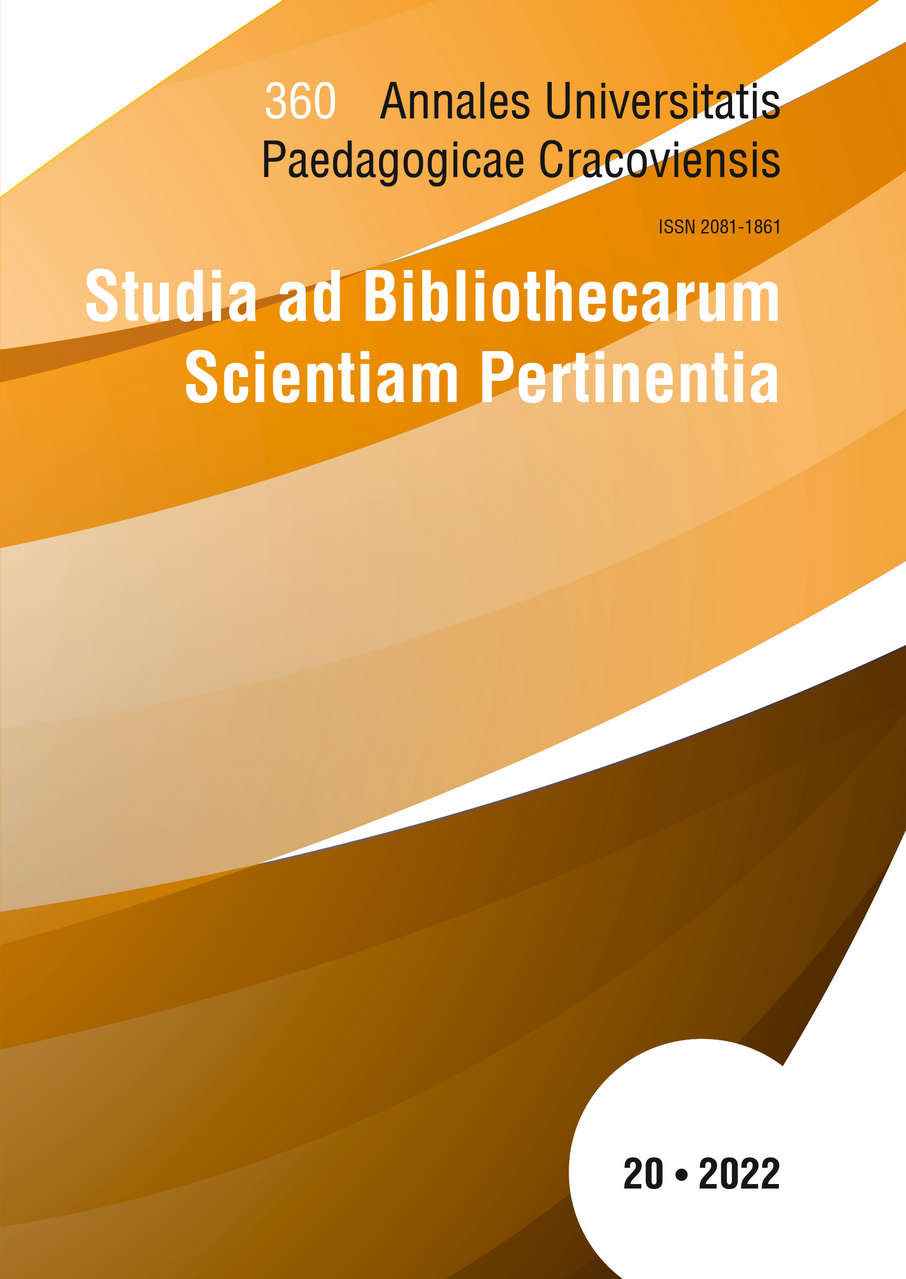Myślenie wizualne w UX na przykładzie sztuki ulicznej
DOI:
https://doi.org/10.24917/20811861.20.46Słowa kluczowe:
visual thinking, communication, eye trackingAbstrakt
With the development of research on the functioning of cognitive processes and communication, it is possible to search for further relationships between these fields. The article “Visual thinking in UX on the example of street art” is empirical in character. It presents visual thinking as a tool for designing the experience of a user of specific information. The indicated notions were applied to paintings on the walls, which are an element of street art. The purpose is to learn the way of thinking of users of their information and check how they decode the message designed by the sender. The basis for the article are the materials collected from Polish and foreign sources and the results of the eye tracking study carried out in June 2022 at the Laboratory of Cognition and Communication, which is part of the Interactive Centre for Communication and Social Studies of the University of Szczecin.
Bibliografia
Ciabach A., Ruksza S., Murale Szczecina, Szczecin 2021, s. 13.
Dąbrowski A., Wpływ emocji na poznawanie, „Przegląd Filozoficzny. Nowa Seria” 2012, nr 3 (83), s. 326.
Encyklopedia PWN, poznanie, [on-line:] https://encyklopedia.pwn.pl/haslo/pozna-nie;3961386.html - 20.07.2022.
Falkowski A., Pamięć i wiedza w kontekście rozwoju poznania naukowego, „Nauka” 2004, nr 2, s. 108-111.
Fundacja Znak, Czym jest myślenie wizualne?, [on-line:] https://www.glob.org.pl/czym-jest-myslenie-wizualne/ - 20.07.2022.
Lachowska K., Pielużek M., Sztuka uliczna jako źródło wiedzy na temat współczesnych społeczeństw - propozycja i weryfikacja metody badawczej, „Media Biznes Kultura” 2021, nr 1 (10) s. 22-28.
Maruszewski T., Psychologia poznania. Sposoby rozumienia siebie i świata, Gdańskie Wydawnictwo Psychologiczne, Gdańsk 2001, s. 332-335.
Osika G., Analiza design user experience w kontekście inteligentnych specjalizacji, „Zeszyty Naukowe Politechniki Śląskiej” 2017, nr 105, s. 327.
Roam D., Narysuj swoje myśli, Wydawnictwo HELION, Gliwice 2009, s.15.
Tyrała Ł., Skórski T., UX i myślenie wizualne - Łukasz Tyrała i Tomasz Skórski, 19.12.2019, [on-line:] https://web.swps.pl/strefa-designu/blog/21055-ux-i-myslenie-wizual-ne-lukasz-tyrala-i-tomasz-skorski - 20.07.2022.
User Experience Professionals Association International, Definitions of User Experience and Usability, [on-line:] https://uxpa.org/definitions-of-user-experience-and-usa-bility/ - 20.07.2022.
Wąsikowska B., Eye trakcing w badaniach marketingowych, „Studia Informatica. Zeszyty
Naukowe Uniwersytetu Szczecińskiego” 2015, nr 36, s. 177-191.
Wójcik M., Koncepcja no user interface i jej konsekwencje dla projektowania usług informacyjnych, „Bibliotheca Nostra. Śląski Kwartalnik Naukowy” 2017, nr 2 (48) s. 62-69.
Zyznarski M., User Experience - projektowanie pozytywnego doświadczenia, „Magazyn Co-march ERP” 2011, nr 1 (15), s. 43-45.
Żmijewska A., Psychologia, „Zeszyt Naukowy” 2010, nr 2, s. 9.
Pobrania
Opublikowane
Jak cytować
Numer
Dział
Licencja
Prawa autorskie (c) 2023 AUPC Studia ad Bibliothecarum Scientiam Pertinentia

Utwór dostępny jest na licencji Creative Commons Uznanie autorstwa 4.0 Międzynarodowe.

